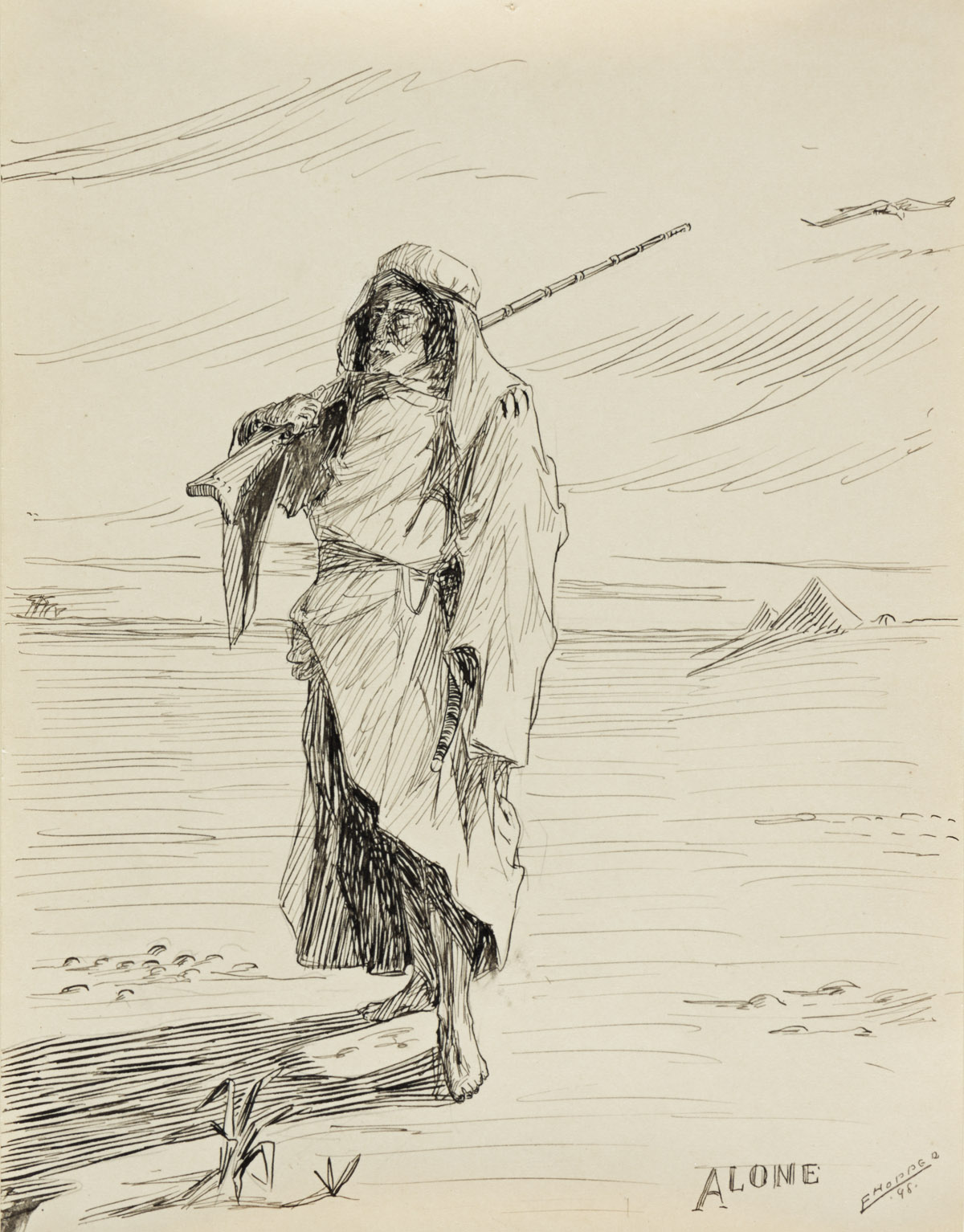Sale 2611 - Lot 14
Unsold
Estimate: $ 12,000 - $ 18,000
EDWARD HOPPER
Alone.
Pen and ink on wove paper, 1898. 204x153 mm; 8 1/4x6 1/4 inches. Signed, titled and dated in ink, lower right recto.
Provenance: Estate of the artist, New York; Josephine N. Hopper, the artist's widow, New York; Reverend and Mrs. Arthayer R. Sanborn, Nyack; private collection, New York; private collection, Pennsylvania.
Exhibited: "Edward Hopper: The Early Years," September 6, 1982-August 31, 1983, various institutions, organized by the Brevard Art Center and Museum for the Southern Arts Federation Visual Arts Touring Program; "Edward Hopper (1882-1967): Early Impressions," Provincetown Art Association and Museum, Provincetown, Massachusetts, May 21-July 4, 2010, and Berta Walker Gallery, Provincetown, Massachusetts, July 30-September 5, 2010; "A Window into Edward Hopper," Fenimore Art Museum, Cooperstown, New York, May 28-September 11, 2011.
Published: Edward Hopper: The Early Years, Melbourne, Florida, 1982, catalogue number 15c; Edward Hopper (1882-1967): Early Impressions, Provincetown, 2010, catalogue number 24 (illustrated); Troyen, A Window into Edward Hopper, Cooperstown, 2011, page 20, figure 7 (illustrated).
There is another study of this subject by Hopper (1882-1967), though more loosely drawn and less finished than the current work, in the collection of the Whitney Museum of American Art (Josephine N. Hopper Bequest). From this very early treatment of the subject, at just 16 years old, only a year before he began art studies with a correspondence course in 1899 and soon after transferred to the New York School of Art and Design (the forerunner of Parsons The New School for Design), Hopper frequently returned to the theme of aloneness (and loneliness) in many of his most iconic works, including the oil paintings Automat, 1927, Morning Sun, 1952, and Office in a Small City, 1953, as well as the etching Night Shadows, 1921.
According to Levin, "Hopper brought to his art and to illustration a cool detachment reflecting the reserve with which he dealt with the world around him. His personality, especially his shyness, did not lend itself to illustrating fiction that was either overly sentimental or involved with fantasy. Hopper preferred to depict what he observed in the most matter-of-fact manner. When he had to illustrate to earn a living, he found greater freedom in the illustration of nonfiction topics, particularly for trade publications," (Levin, Edward Hopper as Illustrator, New York, 1979, page 5).
Alone.
Pen and ink on wove paper, 1898. 204x153 mm; 8 1/4x6 1/4 inches. Signed, titled and dated in ink, lower right recto.
Provenance: Estate of the artist, New York; Josephine N. Hopper, the artist's widow, New York; Reverend and Mrs. Arthayer R. Sanborn, Nyack; private collection, New York; private collection, Pennsylvania.
Exhibited: "Edward Hopper: The Early Years," September 6, 1982-August 31, 1983, various institutions, organized by the Brevard Art Center and Museum for the Southern Arts Federation Visual Arts Touring Program; "Edward Hopper (1882-1967): Early Impressions," Provincetown Art Association and Museum, Provincetown, Massachusetts, May 21-July 4, 2010, and Berta Walker Gallery, Provincetown, Massachusetts, July 30-September 5, 2010; "A Window into Edward Hopper," Fenimore Art Museum, Cooperstown, New York, May 28-September 11, 2011.
Published: Edward Hopper: The Early Years, Melbourne, Florida, 1982, catalogue number 15c; Edward Hopper (1882-1967): Early Impressions, Provincetown, 2010, catalogue number 24 (illustrated); Troyen, A Window into Edward Hopper, Cooperstown, 2011, page 20, figure 7 (illustrated).
There is another study of this subject by Hopper (1882-1967), though more loosely drawn and less finished than the current work, in the collection of the Whitney Museum of American Art (Josephine N. Hopper Bequest). From this very early treatment of the subject, at just 16 years old, only a year before he began art studies with a correspondence course in 1899 and soon after transferred to the New York School of Art and Design (the forerunner of Parsons The New School for Design), Hopper frequently returned to the theme of aloneness (and loneliness) in many of his most iconic works, including the oil paintings Automat, 1927, Morning Sun, 1952, and Office in a Small City, 1953, as well as the etching Night Shadows, 1921.
According to Levin, "Hopper brought to his art and to illustration a cool detachment reflecting the reserve with which he dealt with the world around him. His personality, especially his shyness, did not lend itself to illustrating fiction that was either overly sentimental or involved with fantasy. Hopper preferred to depict what he observed in the most matter-of-fact manner. When he had to illustrate to earn a living, he found greater freedom in the illustration of nonfiction topics, particularly for trade publications," (Levin, Edward Hopper as Illustrator, New York, 1979, page 5).

Exhibition Hours
Exhibition Hours
Aliquam vulputate ornare congue. Vestibulum maximus, libero in placerat faucibus, risus nisl molestie massa, ut maximus metus lectus vel lorem.


